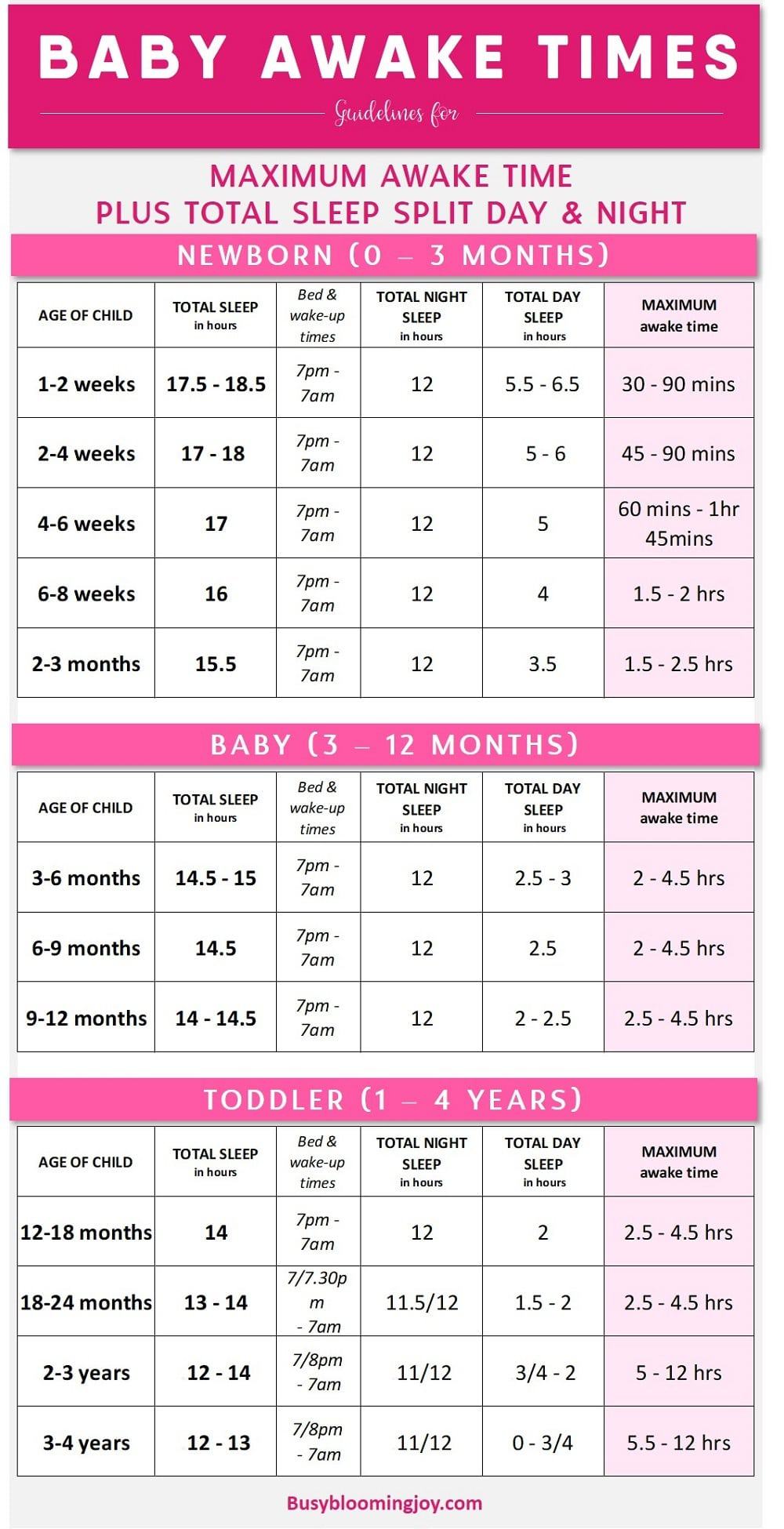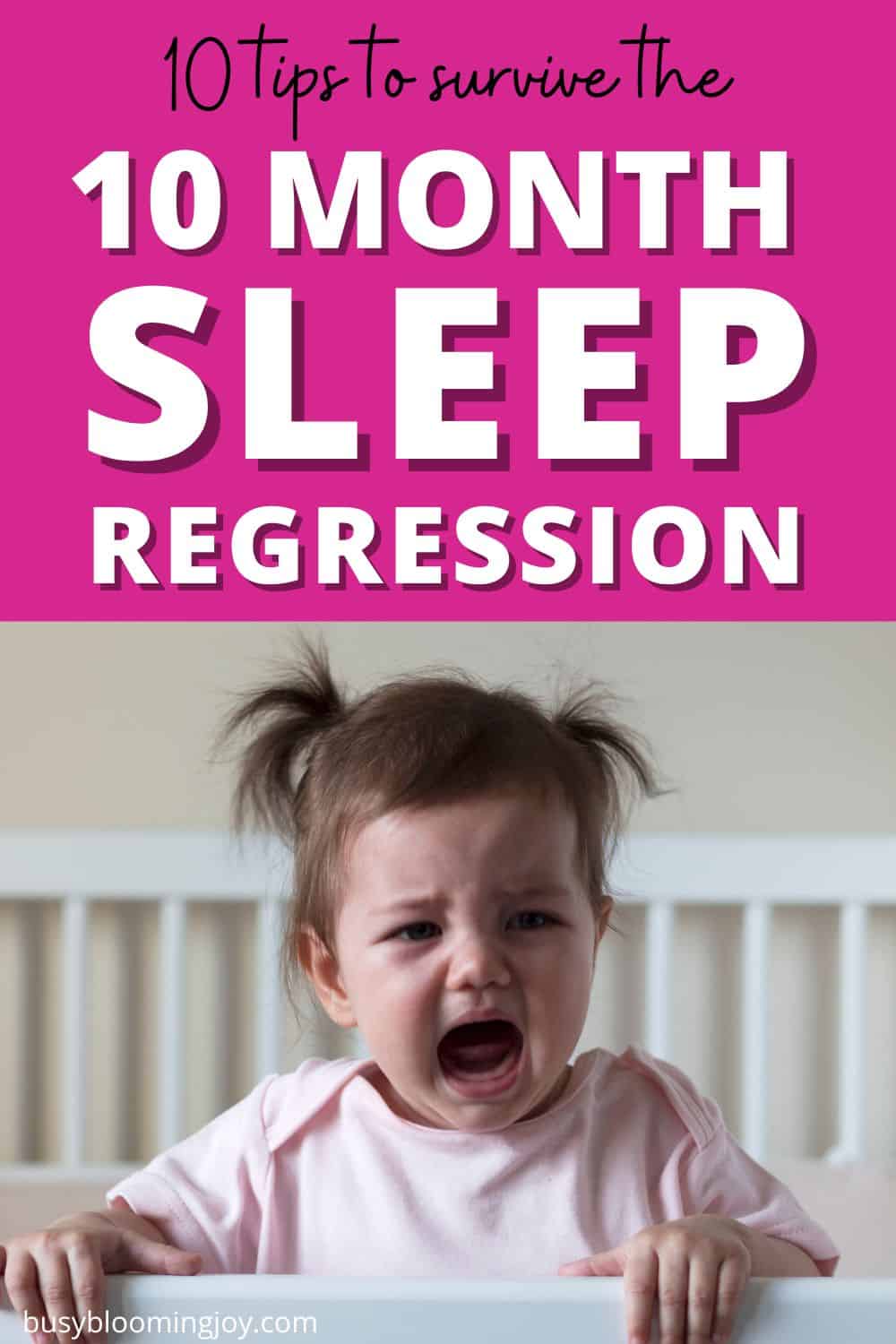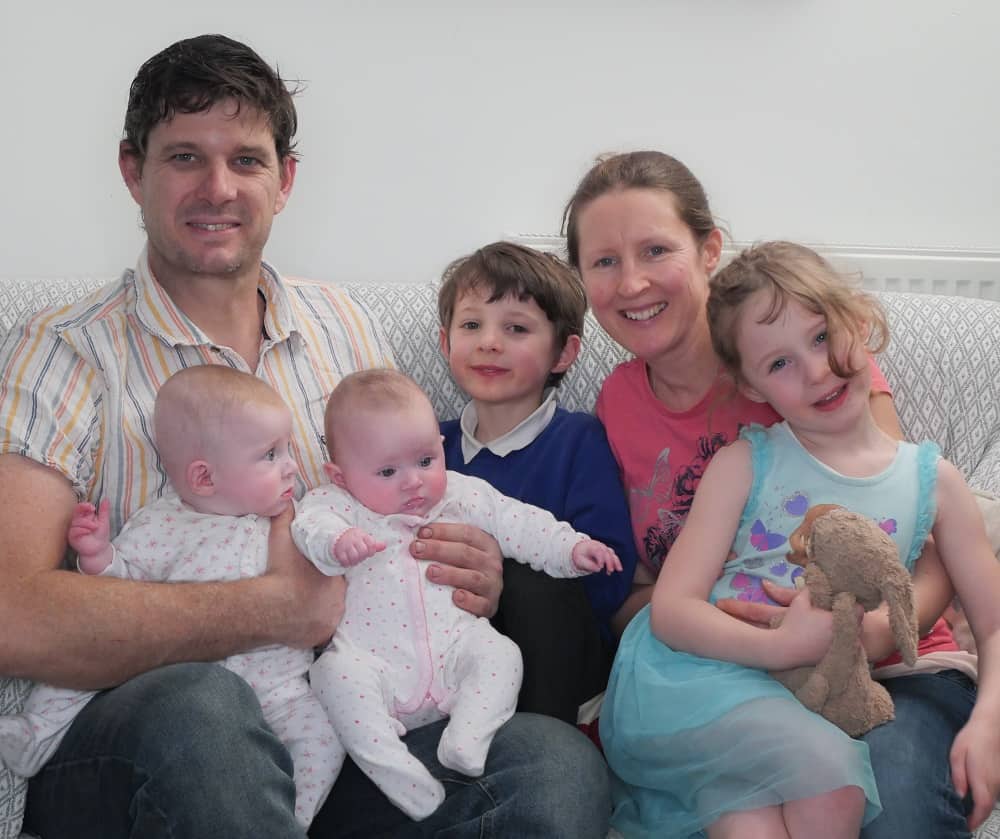Sleep regressions are tough, and the 10-month-old sleep regression, in particular, can come as a real surprise. It may feel like it’s come completely out of the blue. After your little one has been sleeping peacefully for months, it can really knock you for six!
On the other hand, you may be well accustomed to sleep regressions, having experienced the 4-month sleep regression 0r the 6-month regression already. If you got through those, you can get through this one too.
If you’re asking yourself:
- Why is my 10-month-old suddenly waking at night?
- Why does my 10-month-old wake up crying?
- Why does my 10-month-old fight bedtime?
Yes, the answer could be the 10-month sleep regression. However, there may be other sleep issues to blame.
Read on to learn the symptoms of the 10-month sleep regression, how best to handle it and some tips on getting through this sleep disruption with as little lost sleep (and sanity) as possible.
Or perhaps other changes are needed to your baby’s daily schedule – from overall sleep needs to appropriate nap times, here we will help decipher exactly what is going on with your baby’s sleep and get you back on the path to good sleep with your 10-month-old.
This post contains affiliate links. If you click on one and make a purchase, we may receive a commission at no extra cost to you.
Table of Contents
ToggleIs your 10 month old not sleeping through the night?
Babies are capable of sleeping through the night at 10 months – they are physically able to go a full 12 hours at night without eating by this age. However, that doesn’t mean to say that they will – there are many other factors that may cause them to wake.
By 10 months old, babies will have developed sleep habits or associations, meaning they need those things to fall asleep. Because babies wake several times a night, just as we do as adults (even if we don’t realise it), they will then need those same things to help them fall back to sleep. The key is to help them develop so-called “positive sleep associations” that don’t require you, such as white noise, a dark, comfortable and familiar environment and a strong and consistent bedtime routine.
In addition, you want to avoid “negative” sleep habits – like feeding to sleep, since that requires your input. Meaning your baby will wake you up.
If your baby was sleeping through the night, but at 10 months starts to wake, that could signal the 10 month sleep regression.
The strategies to help your baby sleep through the night are mentioned throughout this post, as you’ll use these to navigate the 10 month sleep regression.

What is a sleep regression?
Firstly it is important to understand what a baby sleep regression is. Essentially a sleep regression is a period of time, when for no apparent reason, a baby who has previously been sleeping well, simply doesn’t.
This could mean:
- waking regularly in the night, having previously slept through
- struggling to fall sleep in bed at night
- waking earlier in the morning
- resisting naps
- waking early from naps
What does the 10-month-old sleep regression look like?
Sometimes, like all of us, babies just have a bad night. But if you start experiencing several of the following for several days and nights, it is likely your baby is going through a regression.
The symptoms of the 10 month sleep regression are as follows:
- Waking up at night crying and/or additional wakeups having previously slept through the night
- Trouble settling to sleep
- Early morning wakeups
- Changes to sleep patterns
- Fussiness or resistance at naptime
- Shorter daytime naps
However, several of these can be symptoms of other issues, such as under or overtiredness. The strategies below will help you improve your 10 month olds sleep, whether a sleep regression is the cause or not.
Reasons for the 10-month-old sleep regression
At around 10 months of age, babies are starting to move, they are experimenting with language, babbling and trying to say their first words as well as beginning to understand a lot of what you’re saying.
They are going through a period of rapid brain development with some big changes physically, mentally, and emotionally. Throw a growth spurt into the mix and you have the 10-month sleep regression!
#1 Reason for the 10-month-old sleep regression – Developmental milestones
At this age, our little ones are ticking off some considerable milestones. They are starting to crawl, pull themselves up, and are preparing to walk which is all pretty exciting for them, it’s no wonder sleep has started to lose its appeal.
Your baby’s cot sides may be the perfect height for your 10 month old to stand and hold – so, while previously you may have been able to lie your baby down, now, at 10 months old, there’s the perfect pull up bar. But now how to get down? That’s a skill your 10-month-old may not have learnt let.
Alternatively, your 10-month-old may simply not wish to get down and instead would rather enjoy surveying the nursery from this new vantage point.

#2 – 10 month old sleep regression and separation anxiety
At around this age, babies are more aware of others and becoming more emotionally developed. However, they may not yet understand that people and objects exist even when they cannot be seen. I.e. If your baby can’t see you, it’s like you don’t exist. Of course, that’s a scary concept, and why 10 month olds can be clingy and start to fuss when you’ve left the room.
Once your baby has learnt “object permanence” that even when you’ve left the room you do still exist and will return, separation anxiety will ease. And there are ways you can help your baby learn, which we’ll get on to.
#3 Hunger – another key reason for the 10-month-old sleep regression
With all that extra activity and strengthening going on, babies can start to get hungrier at this age. At 10 months old your baby should have started on solids but 10 months also seems the time when an independent streak emerges, meaning they want to feed themselves… Of course, much of it ends up on the floor!
If your 10-month-old is not getting enough during the day, hunger could be a reason for nighttime wakings.
Is it the 10-month sleep regression or teething?
Teeth can erupt at any point after 4 months and some believe that teething can contribute to sleep regressions. However, teething usually comes with a range of other symptoms such as dribbling, chewing on everything, swollen gums, teething rashes and “teething poops” as well as extreme fussiness.
Of course, anything that is uncomfortable for your baby can disturb them when in light sleep stages and in between sleep cycles. Discomforts will also make it harder for them to settle to sleep at naps and bedtime. So teething can definitely disturb sleep and could explain multiple night wakings, short naps and early morning wakings.
So is it teeth or a sleep regression to blame?
In the absence of other teething symptoms, disturbance to sleep is probably down to some kind of sleep issue and/or the 10-month sleep regression.
Regardless the reason for the sleep disturbance, the strategies outlined in this article should help your 10-month-old get a better night’s sleep.
How long does the 10-month-old sleep regression last?
The 10-month sleep regression should only last a few weeks, so although it is tough, be reassured that there is an end. Typically the 10-month regression lasts between 2 and a maximum of 6 weeks.
If you’ve been going through a bad patch for longer than 6 weeks, it might be worth looking at other factors, such as your 10-month-olds daily schedule and how much sleep they’re getting in the day. For example, too much sleep in the day can impact night sleep.
We’ll get on to other underlying issues that be causing your 10-month-old to sleep poorly further down this article.
Can the 10-month-old sleep regression start early?
Yes, the 10-month-old sleep regression can start early, in fact, it is often called the 8-month sleep regression or the 8-10 month sleep regression.
The regression is most likely to happen when your baby starts hitting those developmental milestones such as crawling and pulling themselves up, and of course, when exactly this happens varies from baby to baby.
Can you prevent a sleep regression?
Whilst there are things you can do to help navigate the 10-month sleep regression, unfortunately, there isn’t much you can do to prevent one. You cannot stop your 10-month-old from going through a sleep regression. It’s a totally normal thing for a baby to go through.
What you can do is ensure you have some solid sleep strategies in place which will minimize the impact of any disturbances, from teething and illness to developmental leaps and sleep regressions. These are highlighted below.
How do I deal with the 10-month-old sleep regression?
Although some sleepless nights and bleary eyes may be inevitable for a few weeks, there are still things you can do to help get through this phase as quickly and as painlessly as possible.
The strategies below directly tackle the cause of your 10-month-olds sleep regression.

Strategies for dealing with the causes of the 10-month sleep regression
#1 Dealing with developmental milestones: give your baby time to practice new physical skills
The most likely cause of the 10-month-old sleep regression is their new found developmental milestones, so make sure you allow enough time in the day for your baby to crawl or pull themselves up or cruise along the furniture. If you do not give them time during the day to do this new very clever thing they have learned, then, the chances are, they are going to want to do it at night time instead.
If your 10-month-olds loves to pull themselves up from the cot rails and you believe that’s contributing to their resistance to sleep, be sure to give them plenty of opportunity to practice this during the day, in advance of naps and bedtime. Hopefully, when it does come time to wind down for sleep and you put them in their cot, the novelty will have worn off and they will stay settled lying down.
An alternative is to adjust the cot sides. You may be able to lower the cot mattress further, so that the rails are out of reach.
#2 Dealing with separation anxiety and the 10 month old sleep regression: help baby learn object permanence
Learning to understand that someone exists even when they’re not in sight (object permanence) comes naturally between 10 and 12 months.
However, there are simple ways you can speed up the process. Playing peekaboo with your baby is probably the easiest way and you probably already do it! Simply hide around the corner, then pop your head out and say “peekaboo”! Well you don’t even know to say it, but it always makes me feel less silly somehow.
There are other easy ways to help your 10-month-old learn object permance in this post: 33 Easy & engaging activities for 10-month-olds.
#3 Dealing with increased appetite: up portion sizes, introduce snacks, ensure baby getting enough milk too
If your baby wakes hungry, now’s the time to encourage more at meal times. For independent types, I find a combination of spoon feeding and finger foods works the best. Your 10 month old can be busy attempting to feed themselves while you slip the odd spoon in here and there.
You can also try a mid-morning or afternoon snack to add in a few calories.

If your baby wakes at night desperate for milk, it may be that they’re getting plenty of solids in the day, but not enough milk. At 10 months old babies still need at least 300 ml – solids and water cannot replace this need for milk.
It can really help to follow a schedule for naps, meals and snacks at 10 months old. This should ensure you’re offering your baby food when they’re hungriest and not too tired. There’s an example 10 month old schedule coming up.
10 month sleep regression or an adjustment to schedule needed?
One key reason for sleep issues in babies, whether they find it hard to fall asleep or don’t stay asleep for long periods is either lack of sleep drive (they’re not tired enough) or overtiredness. At 10 months old, with an increase in development, babies can suddenly need a bit less sleep.
However, it can go the other way too. All the extra energy exerted in moving around and their newfound independence can quickly lead to overtiredness.
Here are some key symptoms for each to figure out whether one of the two might be causing or contributing to your 10-month-olds sleep issues and/or sleep regression:
Symptoms of a baby that lacks sleep drive:
- Wakes up early from naps or in the morning, bright-eyed, happy and ready to go
- Baby takes a long time to settle for naps and in the evening but is content in the crib
- Baby is happy and content in between naps
Symptoms of an overtired baby:
- Taking short or super short naps (20-30 minutes long and never longer than 45 minutes) and waking grumpy, fussy and/or crying
- Baby waking very early in the morning, fussy and grumpy
- Waking multiple times at night and finds it difficult to get back to sleep
- Baby fights sleep for naps and/or at nighttime, grizzly or crying and takes a lot of time and effort to settle
- Baby is unhappy and grizzly in between naps
Related post: Baby fighting sleep? Overtired baby alert! 3 tactics to prevent overtiredness that really work
To ensure baby is tired enough to fall asleep easily and sleep all night long, check the recommended day and night sleep times for a 10-month-old, as well as their awake times. This is important when it comes to ironing out sleep issues and minimizing the impact of the 10-month sleep regression. These next 10 month old sleep regression tips focus on these aspects.
#4 Check your baby is getting an appropriate amount of sleep day and night
This is not an exact science, these are babies after all! But if you’re wondering, how much sleep 10-month-olds need, we’d recommend 14-14.5 hours across a 24 hour day, split as follows:
- 11-12 hours of night sleep, from 7/8 pm to 7 am
- 2 to 3 hours of day sleep, split into a short morning nap and a longer afternoon nap
Related post: Baffled by how much sleep baby needs? Baby sleep chart to the rescue!
#5 Check your baby’s awake times
It’s not as simple as your baby sleeping enough hours in the day and at night, how long they’re awake in between naps and sleeps (their awake times) are important too.
If your baby is awake too long, overtiredness can set in, leading to difficulties in settling, short naps and multiple night wakings. This is a hormone response – cortisol is released as your baby battles to deal with tiredness. Of course, that makes it harder to settle. Cortisol can also continue to disturb your baby when asleep, accounting for short naps and increased night wakings.
Of course, if they’re not awake for long enough, they won’t have enough sleep drive to either fall asleep or stay asleep for long periods.

Awake times for a 10-month-old
At 10 months old, awake times are a little different morning and night:
- In the morning a 10-month-old will tend to have an awake time of 2-3 hours
- In the afternoon they should be able to stay awake for longer quite happily, but this all depends on how long the last nap was. If your baby took a solid 2-2.5 hours, they should happily be able to stay awake for 4-4.5 hours. However, if they only slept an hour, they might start getting tired after 3-3.5 hours.
In addition, watch your baby for signs they’re ready to sleep
As well as keeping an eye on timings, ensure you watch your baby for signs that they’re ready to go to sleep. Learning to recognize sleep cues, among all the other baby cues, is one of those skills you want to become quite adept at, to avoid overtiredness.
Some early cues that indicate your baby is getting tired include losing interest in their surroundings and toys, becoming still, sucking fingers/thumb and/or hands. If you see these signs, try for an earlier bedtime.
Related post: 6 newborn baby cues you need to know
#6 Make sure your baby is awake no later than 2.30/3/3.30 pm
I know full well how tempting it is to leave your baby sleeping when they are having a long nap, but it is ok, and often necessary, to wake a sleeping baby!
As mentioned in the previous point, a 10-month-old can happily stay awake for 4 hours in the afternoon if they had a decent nap at lunchtime, So if your want your 10-month-old settled and in bed by 7 pm, they’d need to be awake no later than 2.30/3pm.
To settle well in the evening, it’s a case of your baby being awake long enough before nighttime sleep to build enough sleep drive, combined with how much/well they slept in the day.
Here are some guidelines on waking times after the last nap, to avoid your 10-month-old fighting bedtime:
- 3.30 pm if they slept for an hour or less during that second nap, and their day sleep totals 2 hours
- 3 pm if they slept for around 1.5 hours during their second nap, and their day sleep totals 2 hours
- 2.30 pm if they slept for 2 hours during their second nap, and their day sleep totals 2.5 hours
What is a 10-month-old baby’s sleep schedule?
Of course, every baby is different but the schedule below seems to work for the majority of babies between 9 and 12 months old. It’s done my 4 well and friends/family that have gone the schedule route with their babies have followed one like this, with a short morning nap and longer afternoon nap.
If you believe your baby is going through the 10 month old sleep regression, then trying this schedule will help you ensure your baby sleeps an appropriate amount during the day with appropriate awake times. This’ll mean they should be tired enough, but not too tired, to settle well for naps and at bedtime.
Whether it’s a sleep regression or not, this should improve your baby’s sleep.
#7 Try this 10 month old sleep schedule for age-appropriate nap times
A 10 month old needs around 12 hours of sleep at night and 2.5 hours of naps during the day.
The schedule I’ve followed with all 4 of my babies looked like this at 10 months:
- 7 am: Wake Up
- 9.30am: Nap time (this should be approximately 2.5 hours from waking)
- 10.00 am: Wake up
- 12.30 pm: Lunch nap (again 2.5 hours after waking from the first nap)
- 2.30 pm: Wake baby if not already awake
- 6.00 pm: Start bedtime routine with bathtime, a milk feed, wind-down, put them in their sleep sack and finally a story
- 7.00 pm: Bedtime (around 4 – 4.5 hours after waking from the lunchtime nap)
Of course, it’s easy to go off course with any sleep schedule, especially when you have to go out and/or factor in other children. It helps to think of schedules as a way to structure the day rather than something to live and die by.
If you’re off by half an hour or even an hour, (as we were most days) just try to ensure your 10-month-old still gets those 2.5 hours sleep in the day, wakes in plenty of time to settle well at bedtime and doesn’t get overtired.

10-month-old sleep regression or other factors?
You may have learnt early on the key to getting your baby to sleep all night long and got to grips with some important baby sleep strategies. In addition to age-appropriate naps and awake times, a good wind-down routine and a relaxing sleep environment can really help set the stage for sleep.
It’s all too easy to become a little lax on these once your baby has started sleeping through the night or may be you haven’t previously had any need to get either of things established.
If you think your baby is going through the 10 month sleep regression, make sure you’ve got these covered.
#8 Create a relaxing sleep environment
An environment conducive to sleep is one which is dark (use blackout shades or blinds in baby’s nursery) and is free from noise disturbance.
Music or white noise can really help eliminate other loud and disturbing background noises, like banging doors, squabbling siblings, the phone ringing etc. White noise is also very calming for babies, since they were used to the loud whooshings and swooshings of mom’s body when in the womb.
(I’m currently using this lightweight, rechargeable and portable Yogasleep Hushh with the twins.)
#9 Stick to a consistent wind-down routine
A regular routine at bedtime and before naps helps your baby learn when it’s time to go to sleep. It should also be calm and relaxing, to help prepare body and mind for sleep.
It should come as no surprise that a baby who is hyped up and overexcited before bedtime will take longer to get to sleep!
The wind-down routine doesn’t have to be long or complicated. For my first two babies a bath was part of our bedtime routine. But with babies 3 and 4, fitting in a bath every day alongside homework and a later dinner with the older 2, was just too difficult.
Our nighttime routine for the twins at 10 months old consisted of:
- a fresh diaper, pajamas or clean baby sleepwear as necessary
- up to their room with the lights dim
- last milk feed
- a short story or picture book (if there was time)
- white noise and/or music on
- sleeping bag on and into bed
Whatever you choose to do before sleep, simply ensure it gives your baby chance to wind down. Repeated consistently, day in day out, these different elements become positive sleep associations i.e. your baby will associate these things with sleep.
Whether your baby is going through the 10 month sleep regression or not, a good wind-down routine will help settle them ready for sleep.
Can you do sleep training during the 10-month old sleep regression?
You can try “gentle” sleep training at any point with your baby. By gentle sleep training we’re talking about following age-appropriate nap and awake times, and being consistent with your wind-down routine as outlined above. So if you think your baby is going through the 10 month old sleep regression, try the suggestions above which include gentle sleep training strategies.
However, we definitely wouldn’t recommend any traditional sleep training methods that involve leaving your baby to cry. The 10 month old sleep regression is not the time to try “cry-it-out” sleep training.

How do I survive the 10-month-old sleep regression?
I think we’ve covered how you can help your baby get through the regression. Looking after yourself is important too! These final 10 month old sleep regression tips are for you.
#10 Make time to look after yourself
With the demands of older kids, work commitments or even pregnancy making time for yourself is so much easier said than done. (I’ve had at least one of those for each of my 4 when they were going through the 10 month sleep regression…) Here are a few ideas that may help:
Don’t overfill your diary
If you’re like me, you’ll like to fill your days with playdates, coffee dates, and baby classes, to keep busy and get you out of the house, but it may be time to slow down for a few weeks whilst you get back on schedule. This will allow you time at home to ensure your baby is getting adequate naps, and give yourself a bit of a break.
Create downtime for yourself each day
I know this can be hard, but if you are not getting enough sleep at night, you need some downtime during the day. The cleaning can wait, go for an afternoon snooze, or at least put your feet up with a cup of tea whilst your baby is napping.
#11 Remember that it’s temporary and focus on the good stuff
It may seem really difficult at the moment, but remember this too will pass. Look after yourself, do everything you can to keep your baby settled and in a routine and you’ll be back on track in no time. And in the meantime, try to enjoy those new milestones your baby is reaching and loving!
What not to do during your 10-month olds sleep regression
Don’t panic!
It can be really frustrating to hit a sleep regression, but they are normal and natural and will pass with time. Just hold tight!
Don’t drop day sleep too much or drop too one nap
If you’re following age-appropriate nap and awake times or a 10 month old sleep schedule, don’t make any drastic changes.
Now is not the time to start dropping a nap. Your 10 month will need at least 2-2.5 hours of sleep in the day, split across 2 naps until 12-15 months. Only at this point should you drop to 1 nap.
Try any form of cry-it-out sleep training
As mentioned above, traditional sleep training methods that involve leaving your baby to cry are not recommended during a sleep regression. Regressions are temporary and will pass without cry-it-out sleep training methods.

10-Month Sleep Regression Frequently Asked Questions
Is a sleep regression normal at 10 months?
Yes, a sleep regression at 10 months is totally normal! Not all babies will experience a sleep regression, but many do.
How do I stop my 10-month-old from a sleep regression?
Unfortunately, there is not a lot you can do. You can have your baby in a perfect routine, sleeping consistently through the night, and still be hit by the 10-month sleep regression.
How many naps should a 10-month-old take
A 10-month-old should be having 2 naps a day – a shorter one in the morning, and a longer nap at lunchtime. See our suggested sleep schedule for a 10-month-old above.
What time should a 10-month-old go to bed?
This will vary depending on what time your baby wakes up in the morning, and how your naps are scheduled throughout the day, however, it is a good idea to aim for between 7 and 8 pm, and your baby should be getting around 12 hours sleep a night.
How do I get my 10-month-old to sleep through the night again?
Regressions are temporary and your baby should be sleeping through the night again within 6 weeks. If this is not the case, then we suggest looking at their schedule and their sleeping environment (see above for more details) and making adjustments accordingly.
More confident in getting through your 10 month olds sleep regression?
Sleep regressions are part of a baby’s development, and although they can be hard work at the time, they are temporary and usually forgotten about not long after.
Hopefully, now you’ll be better equipped to learn how to handle the 10 month sleep regression. Follow our tips above to try and minimize its impact and make sure you find some downtime for yourself so that you’re not totally exhausted.
Good luck – you got this!
Need more tips for your baby?
- (Gentle) Sleep Training: What To Do When Your Baby Wakes Up Too Early In The Morning
- Is it OK to put baby to sleep without burping? (Yes, if you learn how to burp a sleeping baby)
- How to burp a newborn baby that won’t burp (5 tips for your hard-to-burp baby)
- 17 Simple tactics to stop your baby or toddler from climbing out of the crib
- 21 Best portable baby beds & toddler travel cribs in 2022
- 15 Best baby bassinets for small spaces
Looking for some easy activities for your 10 month old?
Bookmark these fun activity ideas for the toddler years
- 39 Fun & easy arts projects & crafts for 1 & 2 year olds
- 55 Best Fun Outdoor Toys for 1 Year Old Toddlers
- 50+ Indoor gross motor activities for toddlers & preschoolers
- 50 Best activities for 18 month old toddlers at home
- 10+ Fun & simple dry messy play ideas for 1 and 2-year-olds
- 100 Fun and Easy Toilet Paper Roll Crafts for Toddlers 2 & 3 Years Old
- 39 simple & sanity-saving activities for toddlers at home (minimal prep, minimal mess)
- 49 Simple & fun outdoor activities for preschoolers (that toddlers will love too)
Looking for something for your baby girls first birthday?













